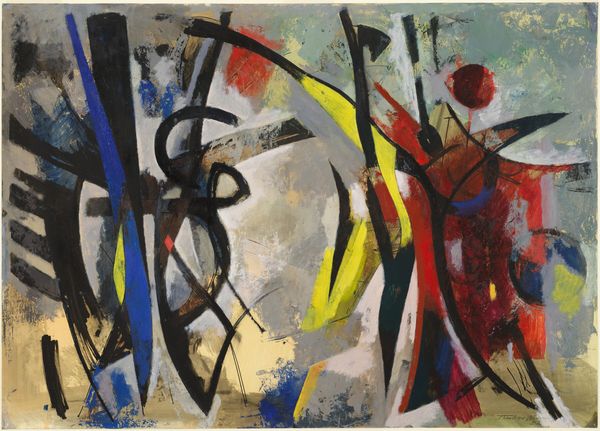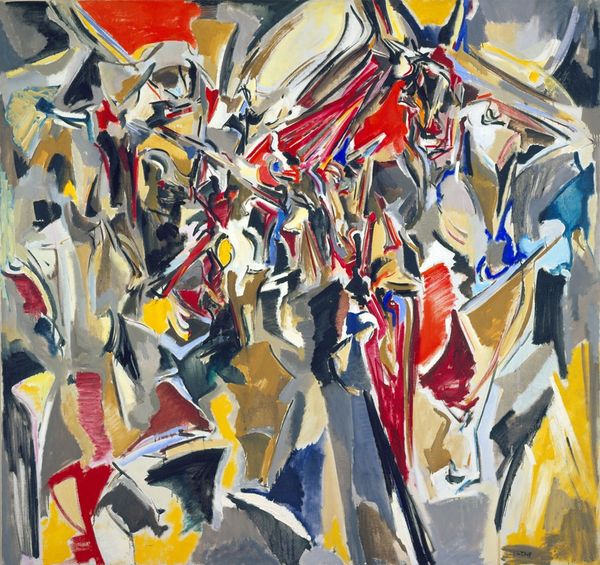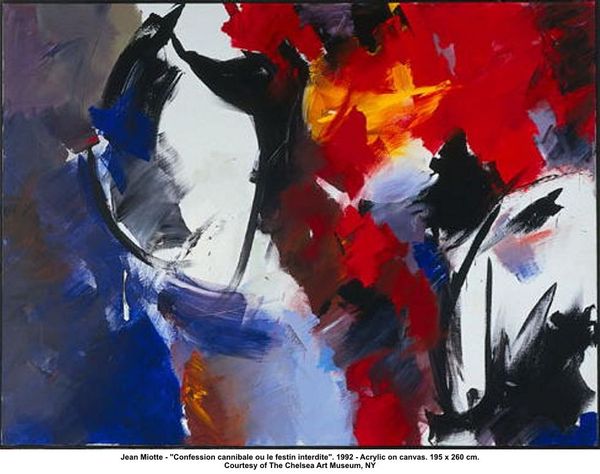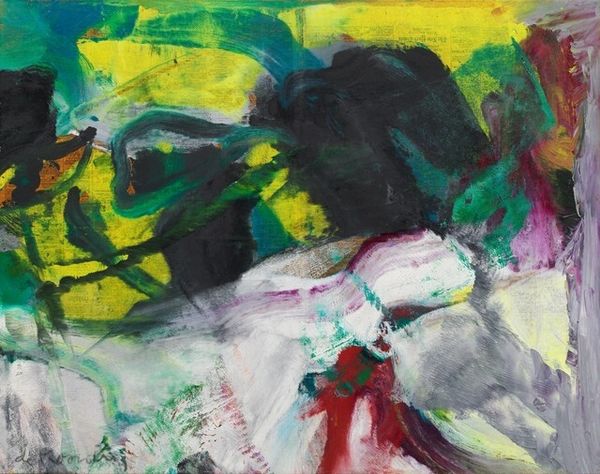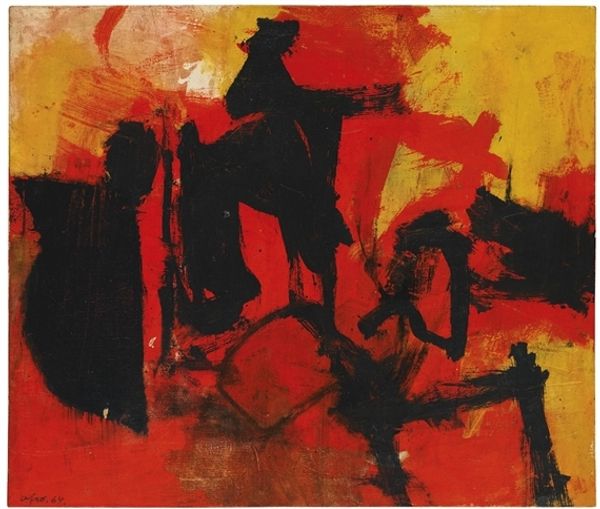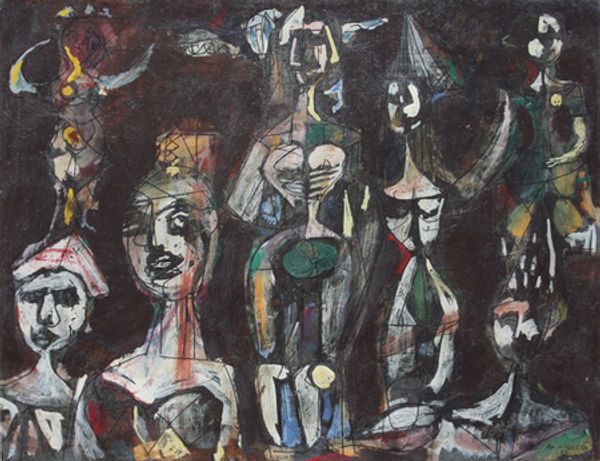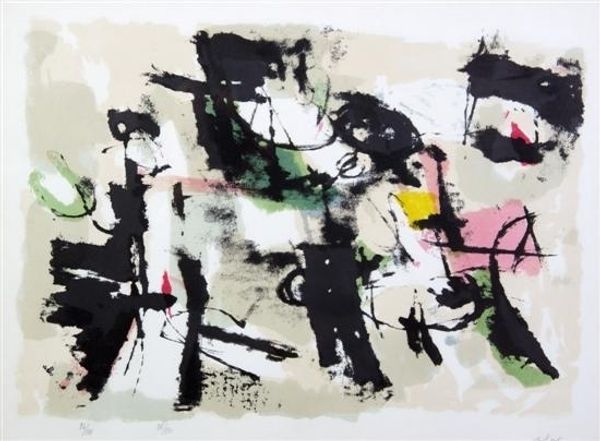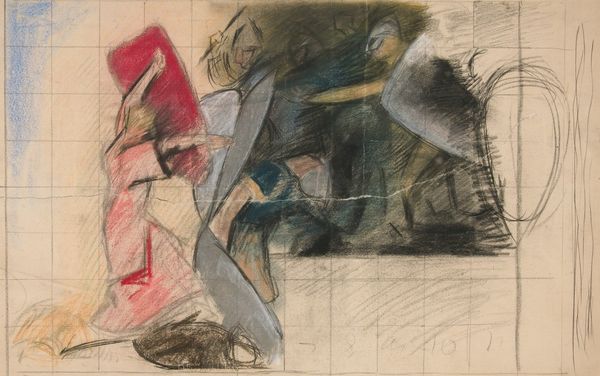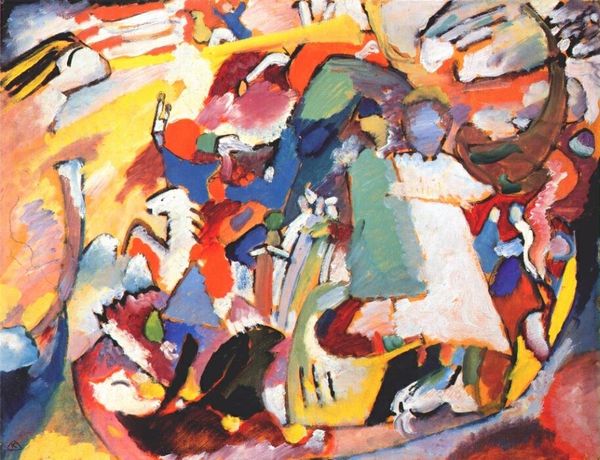
Copyright: Charles Alston,Fair Use
Editor: Here we have Charles Alston’s “Dancers,” painted in 1949, likely in oil and acrylic paint. The swirling figures and bold colors give it such a frenetic energy, almost chaotic, yet there is still a discernible rhythm to it all. What stands out to you in this work? Curator: I see Alston grappling with the societal role of Black artists during the mid-20th century. The era demanded either overt representation or complete abstraction, but Alston, like many others, sought a middle ground. Notice how he uses abstraction not to abandon the figure, but to distill and amplify its expressive power. Editor: That’s interesting. So the abstraction itself is a kind of statement? Curator: Precisely. By not rendering the dancers realistically, he avoids the limiting expectations often placed on Black artists to produce strictly representational work tied to social realism or stereotypical depictions. The Fauvist color palette contributes to this, creating an emotional resonance independent of specific narrative. Do you think this freedom allows for a more universal expression of movement and emotion? Editor: Definitely. The vibrant colors and fragmented forms convey a sense of liberation. I wonder if the choice to depict dancers specifically also speaks to the idea of freedom of expression during that era. Curator: That’s an astute observation. Dance, often associated with Black culture, becomes a potent symbol. Alston uses it not just as subject matter, but as a vehicle to explore broader themes of identity, agency, and the negotiation of artistic expectations within a racially charged environment. The painting embodies the push and pull of representation and abstraction, a central tension for artists of color in the period. Editor: This really highlights how artistic choices are often influenced by and react to socio-political forces, making art such an important lens for understanding history. Thanks for the insightful analysis! Curator: My pleasure. And thank you for prompting a closer look at how Alston navigated those complex historical currents through his unique visual language.
Comments
No comments
Be the first to comment and join the conversation on the ultimate creative platform.

